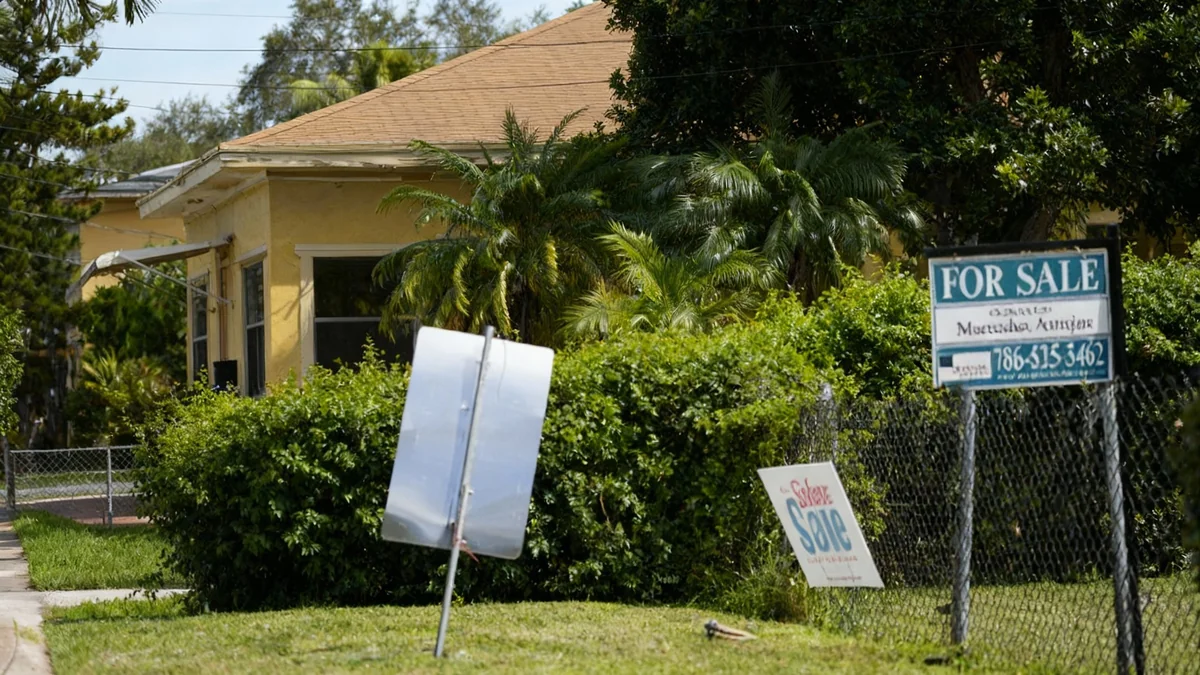Miami's housing market has been identified as the most overvalued in the world for the second consecutive year, according to a global real estate analysis. The report highlights a significant and sustained mispricing of homes, placing the South Florida metropolis at the top of its real estate bubble index.
Despite the high-risk designation, analysts caution that this is not a forecast of an imminent market collapse. Instead, it points to heightened vulnerability due to a growing gap between property prices and local incomes, even as the region experiences strong economic growth and population gains.
Key Takeaways
- For the second year in a row, Miami's housing market is ranked number one on the UBS Global Real Estate Bubble Index.
- The ranking indicates a substantial mispricing of homes, but not necessarily an impending market crash.
- Median single-family home prices in the region have increased by at least 70% since mid-2019.
- A strong job market and population growth are seen as stabilizing factors supporting current valuations.
- A significant affordability gap exists, with median home prices far exceeding what a median household income can support.
Understanding the 'Bubble' Label
A new report from UBS Global Wealth Management has once again placed Miami at the pinnacle of its global housing bubble index. This marks the second year the city has received this distinction. The analysis defines a real estate bubble as a "substantial and sustained mispricing" of residential property.
Jonathan Woloshin, head of U.S. Real Estate Research at UBS Global Wealth Management, clarified the findings. "The risk levels are higher," he stated, emphasizing that the ranking is an indicator of risk rather than a prediction of a crash. The index evaluates markets based on factors like the relationship between prices and local incomes, rents, and broader economic fundamentals.
Miami's position on the list follows a period of rapid price appreciation. Since the summer of 2019, the median price for a single-family home in South Florida has surged by at least 70%. This outpaces the national average, which saw a 50% increase over the same period.
"Miami's been a great market," Woloshin noted. "And look, trees don't grow to the sky, as we know."
Economic Strength vs. Affordability Crisis
Despite the bubble warning, Miami's economy shows signs of robust health. The region continues to boast one of the lowest unemployment rates among major U.S. metropolitan areas, recorded at 3.7% in August. This strong job market, coupled with a steady influx of new residents, fuels housing demand.
Gay Cororaton, Chief Economist for the Miami Association of Realtors, argues that these strong fundamentals justify the price growth. In a response to the UBS report, Cororaton attributed the appreciation to "demand and supply fundamentals rather than by speculative activity and easy credit conditions that characterized the housing bubble that precipitated the Great Recession."
The Income Disconnect
A key factor driving the high bubble risk score is the widening gap between property values and what local residents earn. The median household income in the Miami area is approximately $76,000, according to recent Census Bureau data. Financial experts suggest this income level can typically support a mortgage for a home valued around $300,000. However, the median price for a single-family home in the region is significantly higher, creating a major affordability challenge.
This disconnect is a central concern. While the market may not be driven by irrational speculation, as Woloshin concedes, the question remains whether prices have become "overdone to the upside." The high cost of living, exacerbated by rising mortgage rates and insurance premiums, is beginning to sideline younger and local buyers.
The Influx of Wealth and Market Dynamics
One of the primary forces propping up Miami's real estate values is the migration of high-income individuals from other states. Data from the Miami Association of Realtors has shown that new residents often bring higher incomes, which has a direct impact on housing demand and prices at the higher end of the market.
This influx of external wealth helps explain how prices can remain elevated despite local income constraints. It creates a dual market where a segment of buyers is less sensitive to traditional affordability metrics like local wages and mortgage rates.
By the Numbers: Miami's Housing Boom
- 70%+: Minimum increase in median single-family home prices since 2019.
- $76,000: Approximate median household income in the region.
- $300,000: The estimated home value affordable for a median-income household.
- 3.7%: The region's low unemployment rate as of August.
While this has been a boon for sellers and the local economy, it also raises questions about long-term sustainability and the ability of the local workforce to afford to live in the communities where they work.
A Wildcard on the Horizon: Property Taxes
A potential disruptor for the Florida housing market is the ongoing political debate over property taxes. Governor Ron DeSantis has publicly supported measures to reduce, cap, or even eliminate most local government property taxes.
Several proposals are being considered by state Republicans, including increased exemptions or a gradual phase-out over a 10-year period. Any significant change would require a constitutional amendment approved by voters.
According to Woloshin, such a move could have a profound and immediate impact on home values. "You eliminate property taxes and you're going to push up home prices," he explained. While this might seem beneficial to current homeowners, it could further inflate the market and exacerbate the existing affordability issues, potentially adding more pressure to an already high-risk environment.
For now, the Miami market continues its delicate balance. Economic growth and strong demand provide a solid foundation, but the widening gap between prices and local incomes keeps it firmly in the global spotlight as a market to watch with caution.





